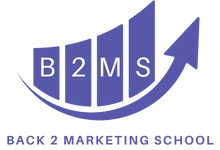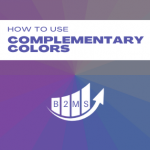What is the Spillover Effect
Spillover Effect Definition
The spillover effect occurs when seemingly unrelated events influence another. The spillover effect can have both positive and negative impacts.
The effect occurs in economics, finance, construction, but especially in marketing and advertising.
Above all, effects can occur when companies or marketing campaigns evolve, such as in the Market-Product Grid development.

What is the spillover effect in marketing
In marketing the spillover effect refers to campaigns that can have an independent external effect on other areas. For example, an advertising campaign by a market competitor can lead to more demand for your goods or services.
The most common spillover effect in marketing is external branding or advertising campaigns.
The effect can be optimized for success by considering what falls within your control and what falls outside your control. There are common categories that fall outside your control like media coverage, market conditions, competitor behavior, or governmental laws and regulations. For most part, you have control on every external message you put out there.
Positive spillover effect
Positive spillover effects occur whenever an unintended positive consequence arises from an independent action.
Positive effects are also referred to as umbrella effects. In advertising, for example, the goal would be to increase product demand for the product. But this is an intended consequence. But if the advertising now also achieves that other products of the company are bought, it is a positive spillover.

Marketing example of a positive spillover effect
Spillover effects occur very frequently in marketing. Below are 3 examples of positive marketing spillovers:
- Social media campaigns result in more website clicks and engagement. These external signalers have a positive impact on search engine optimization and improve rankings.
- An advertising campaign for a specific product or service increases demand for an entirely different product/service offered by the company.
- A company has such a loyal audience that they organize a conference that draws sponsors, ticket sales, and also product sales.
Negative Spillover Effect
Negative spillover effects occur when a measure results in a negative consequence. This form of spillover effect is also called the cannibalism effect.
It can happen that the negative effect is subjective, but positive for an independent third party. A far-fetched example would be the COVID19 crisis. Due to the lockdowns, airlines experienced a negative effect. On the other hand, the impact on the environment from less air traffic was a positive one.

Example of a negative spillover effect in marketing
Negative spillover effects are very common in marketing. Here are 5 examples:
- An advertising campaign increases the demand for a competing product.
- An advertising message is perceived as annoying so that potential customers weigh against a purchase.
- National SEO campaigns increase the number of leads that are not the focus of the company and therefore unqualified.
- Also in SEO, a keyword cannibalization effect can occur when several articles rank for the same keywords and thus compete. The articles then harm each other.
- A case study is seen by another customer who may be in competition with the company of the case study and thus cancels the cooperation.
Real marketing story
A real life case study of the spillover effect in marketing was witnessed in one of my all-time favorite marketing campaigns by M&M. When Google Street View announced that they would come to Toronto in 2010, the M&M Marketing team developed a digital scavenger hunt with the chance of winning a car. The prize was only eligible for Canadians, but this didn’t stop global audiences from playing the game. A local campaign spilled over to a global PR and engagement success, putting M&M on the global map (sorry for the bad pun).
How can I use the spillover effect in marketing?
Marketers can take advantage of the spillover effect by combining related products. For example, if you’re trying to market your coffee brand, you can combine it with a bakery that sells croissants and pastries. Or if you want to sell sneakers, combine them with a sportswear store.
In addition, you should always think about two things when planning a campaign: First, what could be negative direct or indirect effects? Second, what are the opportunity costs associated with the campaign? Should I rather focus on another campaign where my resources are better used and where there might be fewer negative spillover effect risks?

Sascha is a Lifecycle Marketing Consultant with over 8 years of digital marketing experiences in Silicon Valley, the UK, and Germany.
After leading the demand generation for a 100+ million company, he decided to venture out on himself. He’s now helping clients to attract and convert more leads and customers.
His main focus are SEO, paid media & marketing automation – all with the focus to tie marketing campaigns to revenue.
Sascha has been featured in industry publications.



